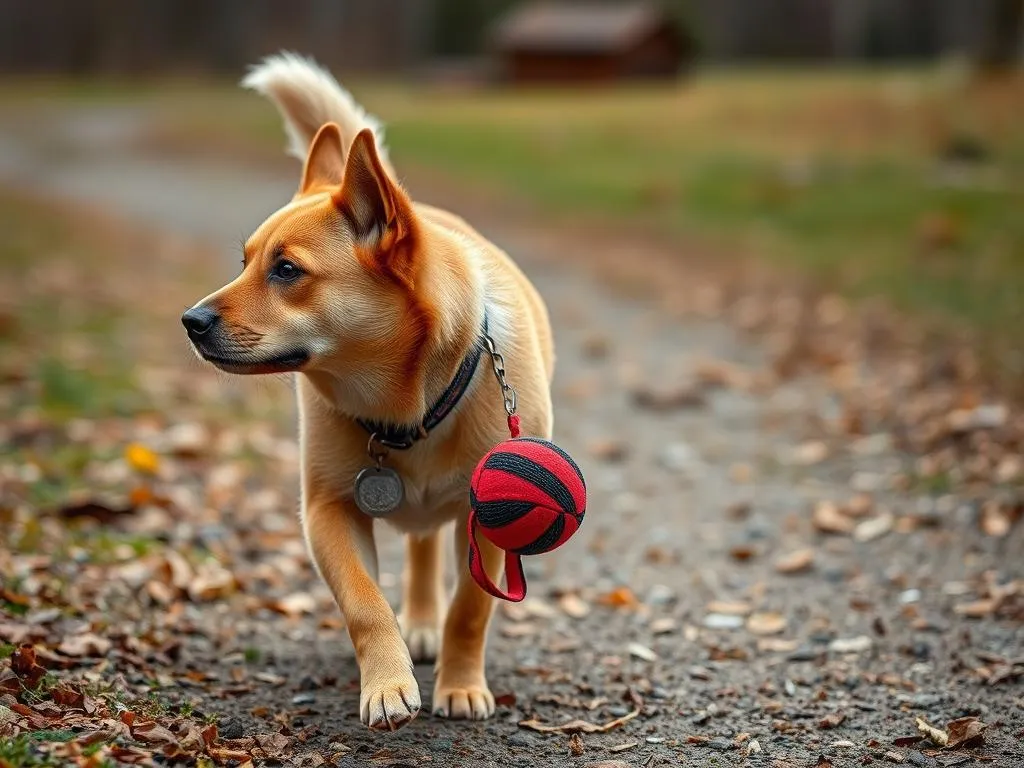
Understanding canine behavior can greatly enhance the relationship between you and your dog. One common behavior observed in dogs is when they walk around holding a toy. This act can have various meanings, and deciphering these can lead to better communication with your furry friend. By exploring the reasons behind this behavior, you can gain insights into your dog’s needs and emotional state, ultimately fostering a stronger bond.
Understanding Dog Behavior
The Nature of Dogs as Social Animals
Dogs are inherently social creatures, and their behavior often reflects their need for interaction. In the wild, dogs live in packs and rely on social connections to survive. This social nature translates into their behavior at home, where they seek companionship and engagement from their human families. Understanding this aspect of canine behavior is crucial, as it sets the foundation for interpreting various actions, including the act of walking around with a toy.
The Role of Toys in a Dog’s Life
Toys serve multiple purposes in a dog’s life. They are not just objects of fun; toys can stimulate a dog’s mind, provide comfort, and even serve as tools for training. There are several types of toys, including:
- Interactive toys: Designed to engage dogs mentally and physically.
- Chew toys: Promote dental health and satisfy the natural urge to chew.
- Soft toys: Provide comfort and companionship.
Toys can help alleviate boredom and anxiety, making them essential for a dog’s well-being. When dogs walk around holding a toy, it is often a reflection of their desire for play and stimulation.
Common Reasons Dogs Carry Toys
Playfulness and Joy
One of the primary reasons dogs carry toys is to express playfulness and joy. When a dog picks up a toy and walks around with it, they may be preparing for a game or simply enjoying the moment. This behavior is often accompanied by other signs of play, such as wagging tails, playful barks, and a relaxed posture. For instance, you might notice your dog prancing around with a favorite squeaky toy, inviting you to join in the fun.
Seeking Attention
Dogs are adept at using their toys to engage their owners. If your dog walks around with a toy, it may be their way of signaling that they want your attention. This behavior can manifest in various situations, such as when you’re busy with chores or on your phone. Watch for cues like bringing the toy closer to you, nudging you with it, or even dropping it at your feet. These actions indicate that your dog is eager to play or interact with you.
Comfort and Security
For many dogs, toys provide a sense of comfort and security. This is particularly true for dogs that experience separation anxiety or stress. Carrying their favorite toy can help soothe their nerves and offer emotional support. In these cases, you might observe your dog clinging to a particular toy during stressful situations, such as thunderstorms or when left alone at home. Providing a safe space with comforting toys can help alleviate their anxiety.
Instinctual Behaviors
Dogs carry toys not only for play but also as a manifestation of their instinctual behaviors. Many breeds have hunting instincts that can surface during playtime. For example, retrieving toys mimics the act of hunting, where dogs would carry their catch back to their pack. This instinctual behavior is deeply rooted and can be observed in various dog breeds, especially those originally bred for hunting or retrieving.
What to Observe When Your Dog Carries a Toy
Contextual Clues
The context in which your dog carries a toy can provide valuable insights into their behavior. Consider the situations where this occurs—are they walking around the house, during walks, or outside in the yard? Environmental factors play a significant role in shaping your dog’s actions. For instance, if your dog carries a toy during a walk, it might be a sign of excitement or a desire to play in a new environment.
Dog’s Body Language
Observing your dog’s body language is crucial for understanding their emotional state when they are carrying a toy. Look for key signals such as:
- Tail position: A wagging tail usually indicates happiness, while a tucked tail may suggest anxiety.
- Ears: Erect ears typically show interest, while flattened ears can indicate fear.
- Posture: A relaxed stance suggests comfort, whereas a tense posture may imply stress.
By paying attention to these signals, you can better differentiate between playful behavior and signs of anxiety or distress.
When to Be Concerned
Excessive Toy Carrying
While it’s common for dogs to carry toys, excessive toy carrying can indicate a problem. If your dog seems to be constantly fixated on certain toys to the point of obsession, it may be a sign of underlying behavioral issues. Look for patterns of compulsive behavior, such as pacing or inability to relax without the toy. In such cases, it’s essential to evaluate your dog’s overall behavior and consult with a professional if needed.
Changes in Behavior
Any sudden changes in your dog’s toy-carrying habits should raise a red flag. If your dog who once enjoyed playing with toys suddenly loses interest or becomes overly aggressive with them, it may indicate underlying health issues or emotional distress. Keeping track of these changes will help you identify if further investigation with a veterinarian or animal behaviorist is necessary.
How to Respond to Your Dog’s Behavior
Encouraging Healthy Play
Selecting appropriate toys for your dog is crucial for encouraging healthy play. Consider your dog’s age, size, and play style when choosing toys. Interactive toys that require problem-solving can keep your dog mentally engaged, while chew toys can satisfy their natural urge to chew. Regularly rotating toys can also keep your dog interested and excited about playtime.
Creating a Comfortable Environment
Creating a comfortable and safe environment for your dog can positively impact their behavior. Establishing a routine helps provide stability, which can reduce anxiety. Designate a cozy space where your dog can retreat with their favorite toys, ensuring they feel secure and relaxed. This safe zone can be especially beneficial during stressful situations.
Consulting a Professional
If you have concerns about your dog’s behavior, especially regarding excessive toy carrying or sudden changes, consulting a veterinarian or animal behaviorist is advisable. They can provide insights tailored to your dog’s specific needs and help identify any potential issues. Additionally, there are numerous resources available for further education on canine behavior, which can enhance your understanding and ability to respond to your dog’s needs.
Conclusion
Understanding what it means when your dog walks around holding a toy is essential for fostering a strong bond with your pet. By observing your dog’s behavior and interpreting their actions, you can better meet their emotional and physical needs. Engaging with your dog through play, providing comfort, and recognizing their instincts are key to a fulfilling relationship. Ultimately, the joy and complexity of canine behavior enrich our lives, making the effort to understand them all the more rewarding.









